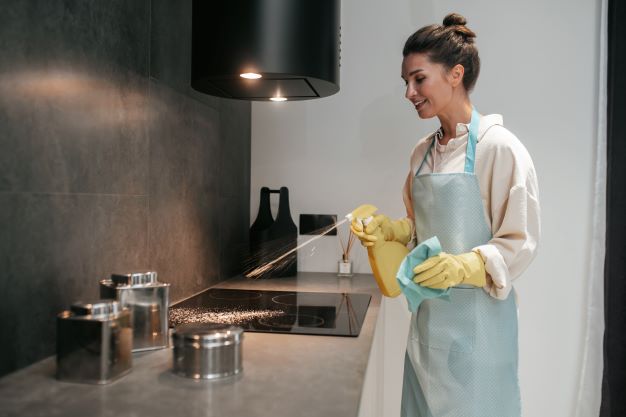Blog
Restaurant Sanitization – How to Keep Food Safe
When you are a restaurant owner, your top priorities are to
prepare the most delicious menu selection, put up amazing décor, and provide
exceptional service. However, all of these will be useless if your kitchen and
dining areas are messy and untidy.
Poor and low-quality cleaning practices may result in the
spread of common bacteria such as E. coli and listeria that may cause your
customers to get sick, or worse.
Ever since the pandemic started, some people are having
second thoughts about dining out in public because of the potential health
risks. Now more than ever, patrons expect restaurants to be sanitized and
disinfected to stay safe from the dreaded virus.
Sanitizing vs. Cleaning – What’s the Difference?
The moment food comes into close contact with
germ-contaminated surfaces, these germs may get transferred to people who
consume the food. Common surfaces that may be contaminated with germs include
knives, cutting boards, pots, pans, and counters. To stop the germs from
spreading, it is important to clean and sanitize all these surfaces.
Cleaning refers to the act of getting rid of grime, debris,
and dirt from surfaces. Sanitizing, on the other hand, helps reduce the number
of germs to a safe level according to public health standards. This can be done
either by disinfecting or the use of chemicals to kill germs or by cleaning or
removing the germs. Cleaning the surface is a must before sanitizing it to
ensure that the chemicals will adhere better to the surface and work their
wonders.
Are There Food-Safe Sanitizers?
Since the pandemic started, people have also become more
conscious of the cleaning products and tools they use to be sure that these
will be strong enough for killing off viruses and germs. However, when cleaning
around and near food, harsher and stronger chemicals may not be the best
options and may even pose danger.
Chemicals that are labeled as disinfectants are considered
the most effective when it comes to killing germs. However, these are not
approved nor recommended to be used in areas with food contact. This is why it
is necessary to use sanitizers in commercial kitchens. Unfortunately, not all
sanitizers are considered food-safe sanitizers.
Your customers may get sick if you use non-food grade
sanitizer in food service areas. Once the food comes into contact with these
chemicals, these chemicals can cause vomiting or nausea. And when the chemicals
are applied the wrong way, your employees may end up suffering from skin and
eye irritation or even breathing issues.
The food code of the Food and Drug Administration (FDA)
identifies several chemical sanitizers approved for surfaces with food contact
such as quaternary ammonium, iodine, and chlorine. Quaternary ammonium
compounds, also known as QACS or quats are substances that combine virus and
bacteria-killing agents with detergents.
By definition, disinfectants and sanitizers are pesticides,
and this is the reason why the EPA or Environmental Protection Agency regulate
them. Always make sure you use products that are safe to be used in foodservice
areas.
Contact Courtesy Building Services Inc for the best
commercial cleaning services to ensure the utmost cleanliness and safety in
your restaurant!
